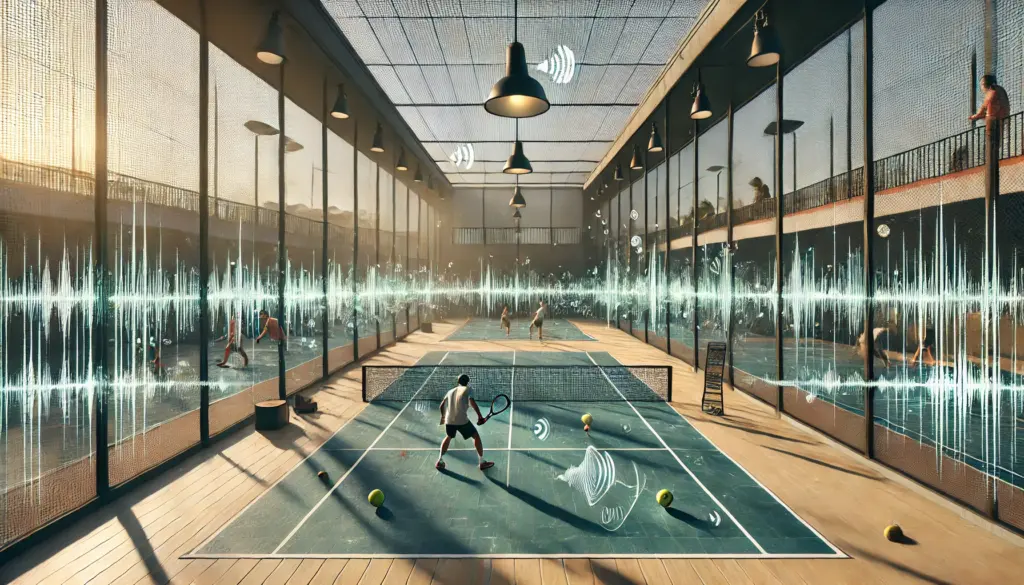A padel court is a uniquely designed sports area specifically tailored for the exciting game of padel, a dynamic racket sport that blends the features of both tennis and squash. Unlike a traditional tennis court, a padel court is more compact and enclosed by walls, which play a crucial role in the game’s strategy and pace.
- A standard padel court measures 10 meters in width and 20 meters in length, featuring a net at the center that divides the court into two equal halves.
- The smaller playing area compared to a tennis court results in a faster-paced and more dynamic game experience.
- The court is typically surrounded by glass or solid walls reaching heights of about 3-4 meters, which are actively used during play. These walls allow the ball to bounce off them, introducing a strategic component reminiscent of squash.
- Additionally, some courts are equipped with a metal mesh around the walls, ensuring the ball remains within the play area and does not exit the enclosure.
When designing a padel court, several critical elements come into play to ensure an optimal playing experience. From the choice of flooring material to the strategic placement of nets, each component contributes to the functionality and enjoyment of the game.
Flooring Material
The surface of a padel court is typically covered in synthetic turf or a sand-filled layer, each offering unique benefits. These materials provide the necessary traction and support required for the game’s quick movements. The type of flooring you choose can significantly impact the bounce of the ball and the ease of player movement. A sand-filled surface, for instance, offers enhanced control, giving players a tactical advantage on the court.
Key Features of Flooring Options
- Synthetic Turf: Offers smooth and consistent play.
- Sand-Filled Surface: Provides more control for strategic gameplay.
Net Structure
The net is a defining feature of the padel court, similar to a tennis net but positioned slightly lower. It stands at approximately 88 cm at the center and 92 cm at the sides, facilitating the unique dynamics of the game.
Outdoor and Indoor Options
When it comes to setting up a padel court, location matters. Courts can be constructed both outdoors and indoors, catering to different climate conditions and player preferences.
Considerations for Court Location
- Indoor Courts: Ideal for regions with extreme weather, providing a controlled environment.
- Outdoor Courts: Common in areas with mild climates, offering a natural playing experience.
Additional Enhancements
To further enhance the playing environment, additional features can be incorporated into the court design. Acoustic barriers are often installed to minimize noise for surrounding areas, while protective covers offer essential protection against sun, rain, and wind, particularly for outdoor courts.
Benefits of Enhancements
- Acoustic Barriers: Reduce noise pollution, benefiting both players and neighbors.
- Protective Covers: Shield the court from weather elements, ensuring playability in various conditions.

